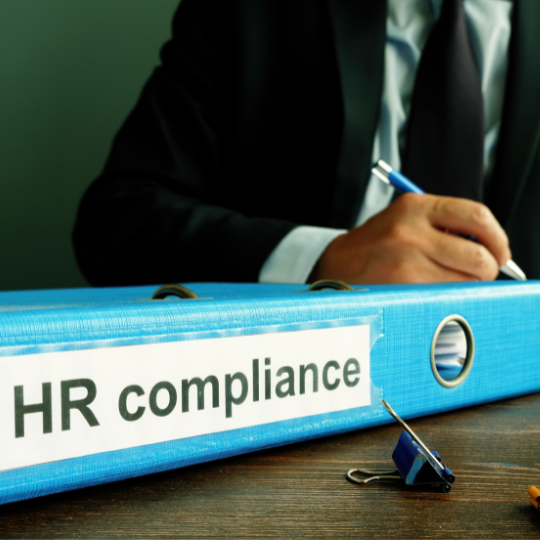
Welcome, weary worker, to the realm of toxic work environments! In this chaotic landscape, where negativity and stress reign supreme, it’s crucial to arm yourself with knowledge and awareness. Before we delve deeper into the treacherous waters of toxic workplaces, let’s establish a solid foundation by understanding what exactly a toxic work environment entails and why it is imperative to recognize and address its presence.
In today’s fast-paced work environment, the importance of a positive and supportive workplace cannot be overstated. However, a recent survey from the American Psychological Association (APA) paints a concerning picture. The study revealed that a staggering 19% of workers describe their workplace as very or somewhat toxic. Those in toxic environments reported a significantly higher rate of harm to their mental health compared to their counterparts in healthier settings (52% vs. 15%). Furthermore, the survey highlighted that more than 1 in 5 workers have experienced harm to their mental health at work, and a concerning 22% reported facing harassment in the past year. This data underscores the critical need for organizations to prioritize employee well-being and address any underlying issues contributing to a toxic work culture. Source: APA
Table of contents
Definition of a toxic work environment
A toxic work environment can be likened to an insidious poison that seeps into every aspect of your professional life. It is characterized by pervasive negativity, heightened tension, and an overall sense of unease among employees.
This toxicity can manifest in various forms such as intimidation, harassment, bullying, or even subtle undermining behaviors. In a toxic work environment, trust and cooperation become scarce commodities as individuals engage in power struggles or engage in malicious gossip behind closed doors.
The toxicity may stem from poor leadership practices or dysfunctional team dynamics that perpetuate an unhealthy culture within the organization. It is crucial to distinguish between occasional workplace conflicts and ongoing toxicity; while conflicts are normal in any workplace setting, a toxic environment goes far beyond isolated incidents.
Importance of recognizing and addressing toxic work environments
Recognizing the signs of a toxic work environment is vital because prolonged exposure can have detrimental effects on both your mental well-being and overall job performance. By acknowledging the existence of toxicity within your workplace, you empower yourself to take necessary action towards creating positive change.
The consequences of ignoring or downplaying a toxic work environment are far-reaching. They extend beyond personal suffering to impact productivity levels and ultimately jeopardize the success of organizations as employees disengage or seek greener pastures elsewhere.
Furthermore, unchecked toxicity can lead to high employee turnover rates which incur significant financial costs for companies in terms of recruitment, onboarding, and training. Addressing toxic work environments is not only a matter of self-preservation; it is also a collective responsibility.
By speaking up and taking action, you contribute to fostering healthier work environments not just for yourself but also for your colleagues. Together, we can create workplaces where collaboration, respect, and growth thrive.
Identifying Signs of a Toxic Work Environment

Lack of effective communication and transparency
In any healthy work environment, open and effective communication is the lifeblood that keeps everything flowing smoothly. However, in a toxic work environment, communication becomes murky and inefficient. You might notice that important information is withheld or not shared in a timely manner, causing confusion and frustration among employees.
Messages are often misinterpreted or distorted due to a lack of clarity and transparency. Moreover, genuine dialogue between colleagues becomes rare as people become fearful of expressing their opinions or concerns openly.
Instead, discussions are dominated by closed-door meetings or cryptic emails that leave everyone guessing. This lack of transparent communication creates an atmosphere of distrust, making it difficult to build strong working relationships and collaborate effectively.
Constant negativity and criticism
A toxic work environment is characterized by an incessant cloud of negativity hanging over practically every interaction. Colleagues find fault in everything – from ideas to work performance – often without providing constructive feedback or guidance for improvement. It’s like walking on eggshells all the time, afraid that the smallest mistake will be blown out of proportion.
In such an environment, compliments are scarce while criticism is abundant. The toxic cycle perpetuates itself as employees start feeling demoralized and question their own abilities.
The constant barrage of negativity erodes self-esteem and dampens enthusiasm for work. It becomes increasingly challenging to maintain motivation when your efforts are met with relentless cynicism instead of recognition or encouragement.
High levels of stress and burnout among employees
Stress is an inevitable part of any job; however, in a toxic work environment, stress levels skyrocket to unhealthy extremes. The atmosphere becomes suffocating as deadlines become impossible to meet due to constant changes in expectations or last-minute demands without proper support or resources. Employees find themselves working long hours, sacrificing personal time, and consistently experiencing burnout.
The toxic culture often promotes a relentless “work at all costs” mentality that disregards the importance of work-life balance. Physical and mental health suffer, leading to increased absenteeism and decreased productivity.
The effects of this chronic stress spill over into personal lives, straining relationships and eroding overall well-being. It becomes paramount to identify these signs early on to protect yourself from being engulfed by the detrimental impact of a toxic work environment.
Impact on Employee Well-being

Physical health consequences, such as increased risk of heart disease and weakened immune system
Working in a toxic environment can take a toll on your physical health. The constant stress and negativity can elevate your blood pressure, increasing the risk of heart disease. The anxiety and frustration that come with toxic workplaces can also weaken your immune system, making you more susceptible to illnesses.
It’s like being in a battle every day, and our bodies pay the price. Moreover, the physical toll doesn’t stop there.
In toxic work environments, employees often neglect their own well-being due to the demands placed upon them by unsupportive management or excessive workload. They may skip meals or resort to unhealthy eating habits just to keep up with deadlines and demands.
This can lead to weight gain or loss, digestive problems, and even chronic conditions such as diabetes or gastrointestinal disorders. Your body deserves better than this constant state of stress-induced neglect.
Mental health effects, including anxiety, depression, and decreased self-esteem
The impact on mental health is perhaps one of the most damaging consequences of a toxic work environment. When subjected to constant negativity, criticism, and unfair treatment from colleagues or superiors, it’s only natural for anxiety and depression to creep into your mind like unwelcome guests. Anxiety becomes your unwanted companion as you anticipate each new day filled with tension-inducing encounters.
Depression lurks in the shadows when you feel trapped in an environment that diminishes your self-worth and erodes your confidence. The relentless pressure erodes even the strongest self-esteem over time.
Negative impact on work-life balance and personal relationships
Toxic workplaces have an uncanny ability to invade even the most sacred aspects of our lives – our personal relationships outside of work and our cherished work-life balance. As stress seeps into every fiber of your being, it becomes increasingly difficult to switch off when you leave the office. You find yourself constantly checking emails, worrying about unfinished tasks, and dreading the next day.
This relentless cycle disrupts your ability to fully engage with your loved ones and enjoy quality time. Furthermore, toxic work environments can strain personal relationships.
The constant negativity and emotional exhaustion brought home from work can make it challenging to communicate effectively or offer the support that our loved ones may need. The strain on relationships can lead to feelings of isolation, resentment, and even separation.
It is a direct assault on our happiness outside of work. Toxic work environments have far-reaching consequences that permeate both our physical and mental well-being.
The toll they take on our bodies is evident in increased risks of heart disease and weakened immune systems. Meanwhile, the impact on mental health manifests through anxiety, depression, and decreased self-esteem.
Our personal lives also suffer as we struggle to maintain a healthy work-life balance and maintain meaningful relationships outside of work. Recognizing these impacts is crucial in order to take action and reclaim our well-being by freeing ourselves from toxic workplaces before irreparable damage occurs.
Poor Leadership and Management Practices
One of the primary factors contributing to a toxic work environment is poor leadership and management practices. When managers fail to effectively lead their teams, it creates a hostile and unhealthy atmosphere.
One common issue is micromanagement, where managers feel the need to control every aspect of their employees’ work. This not only hampers employee autonomy but also demonstrates a lack of trust in their abilities.
Constant surveillance and nitpicking can make employees feel suffocated, stifling their creativity and innovation. Favoritism is another detrimental practice that can poison the workplace environment.
When certain individuals are consistently favored over others based on personal relationships or biases, it breeds feelings of resentment and unfair treatment within the team or organization. Employees who perceive this favoritism may believe that their efforts go unnoticed or undervalued, leading to decreased motivation and job satisfaction.
Lack of Support for Professional Growth and Development
In a healthy work environment, professional growth should be encouraged and supported by the organization. However, when there is a lack of support for development opportunities, it contributes to toxicity within the workplace. Limited opportunities for training or advancement can leave employees feeling stagnant in their careers with no room for growth.
The absence of avenues for personal improvement not only impacts job satisfaction but also diminishes motivation and engagement. Furthermore, the absence of constructive feedback or recognition for achievements worsens this toxic dynamic.
Employees need feedback from their superiors to understand how they can improve or refine their skills. Without constructive criticism, they may continue making mistakes without guidance on how to rectify them.
Similarly, if achievements are never acknowledged or celebrated, employees may feel unappreciated and undervalued. Toxic workplaces often exhibit poor leadership practices such as micromanagement, favoritism, and the absence of support for professional growth and development.
Recognizing these factors is crucial in understanding what contributes to a toxic work environment. By addressing these issues, organizations can take significant steps towards creating a healthier and more productive workplace.
Strategies to Address a Toxic Work Environment

Communicate Concerns with Management or HR Department
In the face of a toxic work environment, it’s essential to speak up and voice your concerns to those who have the power to effect change. Whether it’s your immediate supervisor, higher-level management, or the Human Resources department, find a way to express your dissatisfaction.
Ensure that you approach these conversations in a professional and respectful manner. Take notes on specific incidents that have contributed to the toxicity, including dates, times, and individuals involved.
This documentation will provide concrete evidence of the issues at hand and lend credibility to your claims. By communicating your concerns directly, you create an opportunity for dialogue and potential resolution.
Seek Support from Colleagues or External Networks
Navigating a toxic work environment can be emotionally draining and isolating. It’s crucial during such times to seek support from colleagues who may share similar experiences or empathize with your situation. Trusted coworkers can provide validation for your concerns while offering advice on how they cope with or address similar challenges in the workplace. But remember not to confuse colleagues with friends. Read this article to better understand the difference.
Sharing experiences within this circle of trust not only relieves some of the burdens but also helps identify patterns within the organization that need addressing. Additionally, seeking external networks can broaden one’s perspective and provide fresh insights into handling toxicity in the workplace.
You can join online support groups where you can openly share your experience and talk with someone who is facing the same challenges you do, someone who knows exactly how you feel. Together, you can find the strength to move forward and find solutions.
Professional organizations related to your field or online communities focused on workplace dynamics can be invaluable resources for advice and guidance. Engaging with individuals outside your organization allows you to tap into collective wisdom and gain diverse perspectives on how others have successfully navigated similar situations.
Focus on Self-Care Strategies
When facing a toxic work environment, it’s crucial not only to address external factors but also prioritize self-care strategies that mitigate its negative effects on your well-being. Establishing boundaries between work life and personal life is essential to prevent the toxicity from seeping into your personal space.
Clearly define your work hours and avoid engaging in work-related activities outside of those boundaries, unless absolutely necessary. This separation will allow you to create a mental and physical distance from the toxicity, preserving your energy for personal pursuits and relationships.
Moreover, implementing stress-reducing techniques can help you cope with the daily challenges encountered in a toxic workplace. Mindfulness practices, such as meditation or deep breathing exercises, can restore a sense of calm amidst chaos.
Physical exercise also provides an outlet for stress release while promoting overall well-being. Engaging in activities you enjoy outside of work can serve as a much-needed respite and recharge your emotional batteries. Look for Personal Trainers near you, with an expert guidance you can reach your goals faster.
Remember that while addressing the toxicity within your workplace is crucial, taking care of yourself should remain an ongoing priority. By adopting self-care strategies, you not only protect your own mental and physical health but also equip yourself with the strength needed to navigate difficult circumstances more effectively.
With these strategies in mind – communicating concerns, seeking support from colleagues or external networks, and focusing on self-care – you empower yourself to take proactive steps towards addressing the toxic environment that surrounds you. Remember that change may not happen overnight, but by persistently advocating for improvement and prioritizing your own well-being, you pave the path towards a healthier work environment – one where positivity and growth flourish.
The Importance of Taking Action

1. Embracing Change:
A Step towards Growth In the face of a toxic work environment, taking action becomes imperative for personal growth and well-being. By acknowledging the toxicity and having the courage to address it, you are taking a powerful step towards embracing change. Remember, staying in an unhealthy work environment not only damages your professional development but also affects your personal life. Choosing to take action is an empowering decision that opens doors to new opportunities.
2. Advocating for Yourself and Others:
When you take action against a toxic work environment, you become an advocate not only for yourself but also for others who may be silently suffering. By shedding light on the toxic dynamics within your workplace, you contribute to fostering a culture where everyone’s well-being is valued and respected. Your bravery in speaking up can inspire others to do the same, creating a ripple effect that could potentially bring about positive change within the organization.
3. Cultivating Your Well-being:
A Catalyst for Success: prioritizing your well-being is crucial for both personal and professional success. Exiting a toxic work environment allows you to reclaim your mental and emotional health, enabling you to thrive in future endeavors. By removing yourself from negativity and stressors, you create space for self-care practices that promote resilience and growth. Taking action empowers you to choose environments that align with your values, leading to greater fulfillment in your career journey.
4. Opening Doors of Opportunity:
Leaving a toxic work environment may initially feel daunting or uncertain; however, it can also be the catalyst for discovering new opportunities that foster happiness and success. When one door closes due to toxicity, another door opens, a door leading towards healthier workplace cultures where collaboration, support, and growth are valued principles. By taking action against toxic work environments, you pave the way for a brighter future, filled with possibilities and meaningful professional connections. Recognizing the importance of taking action against a toxic work environment is vital for personal and professional growth. Embracing change, advocating for yourself and others, prioritizing well-being, and opening doors to new opportunities are all empowering outcomes that come from standing up against toxicity.
Remember that you deserve to work in an environment that values your well-being and supports your growth. Trust in your abilities, take the necessary steps to address the toxicity around you, and look forward to a brighter future filled with positivity and success.
FAQs: Toxic Work Environment: Quit Now!
What constitutes a toxic work environment?
A toxic work environment is characterized by negative behaviors, attitudes, and actions that harm employees’ well-being. This can include excessive workload, lack of appreciation, constant criticism, harassment, discrimination, and a lack of work-life balance.
How can I identify if I’m in a toxic work environment?
Signs include feeling dread about going to work, a decline in physical or mental health, feeling isolated or bullied, noticing high turnover rates, and consistently negative interactions with colleagues or superiors.
Is quitting the only solution to a toxic work environment?
While quitting is a definitive way to remove oneself from a harmful environment, it’s not always feasible. Before making that decision, consider addressing the issues with HR, seeking counseling or support, or looking for internal transfers.
How can I cope if I can’t leave a toxic job immediately?
Seek support from trusted colleagues, friends, or professionals. Set boundaries, take breaks, and prioritize self-care. Document any inappropriate behaviors or actions to present to HR or management if necessary.
What are the long-term effects of staying in a toxic work environment?
Prolonged exposure can lead to burnout, depression, anxiety, physical health issues, and decreased job performance or satisfaction. To understand more about burnout and how it differs from mere fatigue, you can delve deeper by reading this article.
Can a toxic work environment be changed or improved?
Yes, with concerted efforts from leadership, HR, and employees. This might involve training, open communication, setting clear expectations, and holding perpetrators accountable.
How can I approach my superiors about the toxic environment?
Approach with concrete examples and express your concerns in a constructive manner. It might be helpful to have solutions or suggestions ready, and always prioritize your safety and well-being.
Are there legal actions I can take against a toxic employer?
Depending on the severity and nature of the toxicity (e.g., harassment, discrimination), there may be legal avenues available. Consult with a legal professional or workers’ rights organization for guidance.
How can I support a colleague who’s experiencing a toxic work environment?
Listen to them, offer support, and encourage them to seek help or speak to superiors. Remember to maintain their confidentiality.
Are there resources available for those affected by toxic work environments?
Yes, many organizations offer counseling, hotlines, and resources for those affected. Check with local mental health organizations, workers’ rights groups, or HR departments for guidance.
Remember, no job is worth sacrificing your mental or physical well-being. If you find yourself in a toxic work environment, prioritize your health and seek the support and resources you need.

